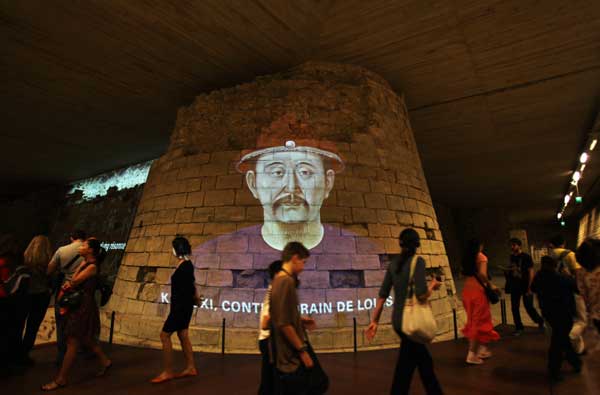About 130 artifacts from the Forbidden City, China's ancient imperial palace museum, started to greet the French public in the Louvre Museum on Monday in an exhibition that will run until Jan. 9, 2012.
|

|
|
Visitors walk past a projective of the portrait of Emperor Kangxi in the Louvre Museum in Paris, capital of France, on Sept. 26, 2011. About 130 artifacts from the Forbidden City, China's ancient imperial palace museum, started to greet the French public in the Louvre Museum on Monday in an exhibition that will run until Jan. 9, 2012.
|
Frederic Mitterand, the French Minister of Culture and Communication, and Chinese Ambassador to France Kong Quan attended the opening ceremony of the exhibition on Monday.
The exhibits including arms, clothing, bronzes, pieces of jade, lacquerware, enamels, seals, ceramics and personal effects of the Ming and Qing emperors, some of which were on their first overseas visit. The Louvre, which has no Chinese art department, modified parts of the museum to accommodate the collection.
Curator of the Louvre Heri Loyrette said the coordinated exhibition would be marked in the history of France and China with the support of both governments and joint efforts of professionals from both sides.
The Forbidden City, which became a museum in 1925, houses a collection of over 1.5 million artifacts, mainly from the ancient imperial court. The labyrinthine complex, home to 24 emperors, their families and courtesans, and reputed to have 9,999 rooms, is one of China's best-known icons and most popular tourist attractions. Some 7 to 8 million tourists visit it every year.